The Hagia Sophia Grand Mosque in Istanbul is a historic architectural marvel. It has served as a church, mosque, and museum.
The Hagia Sophia Grand Mosque, located in Istanbul, is an iconic landmark with a rich history spanning over 1,500 years. Originally built as a cathedral in 537 AD, it was later transformed into a mosque after the Ottoman conquest in 1453.
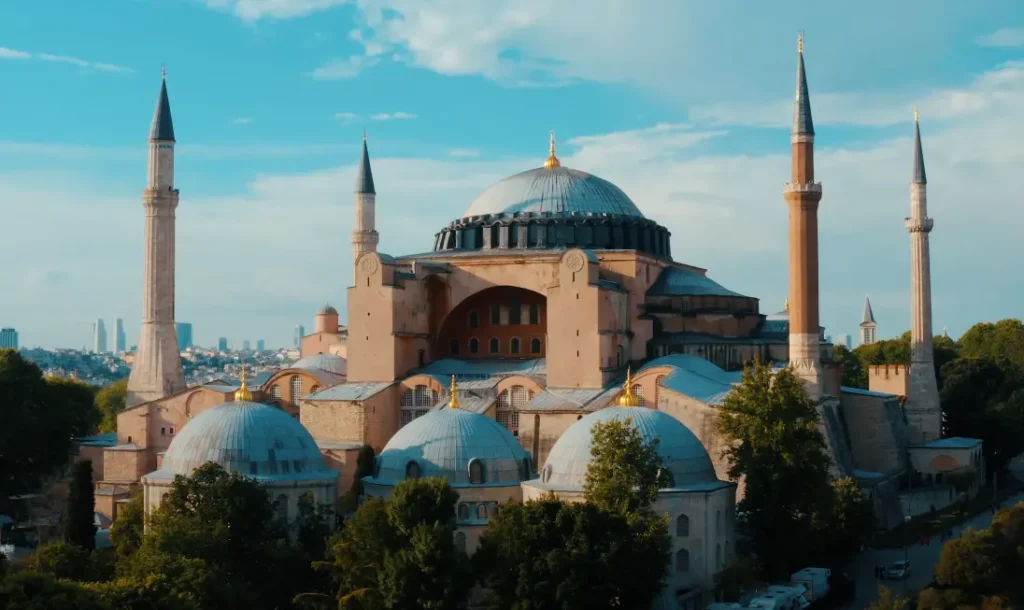
In 1935, it became a museum showcasing its diverse cultural heritage. In 2020, it was reconverted into a mosque, reflecting its enduring significance in Turkish history. The Hagia Sophia stands as a testament to the city’s layered past, blending Byzantine and Ottoman architectural styles. Visitors from around the globe admire its grand domes, intricate mosaics, and historical significance.
Historical Significance
The Hagia Sophia Grand Mosque in Istanbul is a marvel of architecture and history. It has stood the test of time and witnessed the rise and fall of empires. This mosque has a rich past that reflects both Byzantine and Ottoman influences. The Hagia Sophia mosque history reveals its transformation from a church to a mosque,n to a museum, and back to a mosque again.
Table of Contents
Byzantine Era
The Hagia Sophia was built in 537 AD during the reign of the Byzantine Emperor Justinian I. For nearly 1,000 years, it served as a cathedral and the central church of the Eastern Orthodox Church, marking the golden age of Byzantine architecture.
Some key aspects of its Byzantine era include:
- Architectural Innovation: The Hagia Sophia featured a massive dome that seemed to float in the air.
- Religious Significance: It was the spiritual heart of the Byzantine Empire.
- Art and Mosaics: The interior was adorned with stunning mosaics depicting Christian themes.
These elements made the Hagia Sophia a symbol of Byzantine power and religion. Its grandeur and beauty were unmatched at the time. The building’s design influenced many other structures, making it a cornerstone of architectural history.
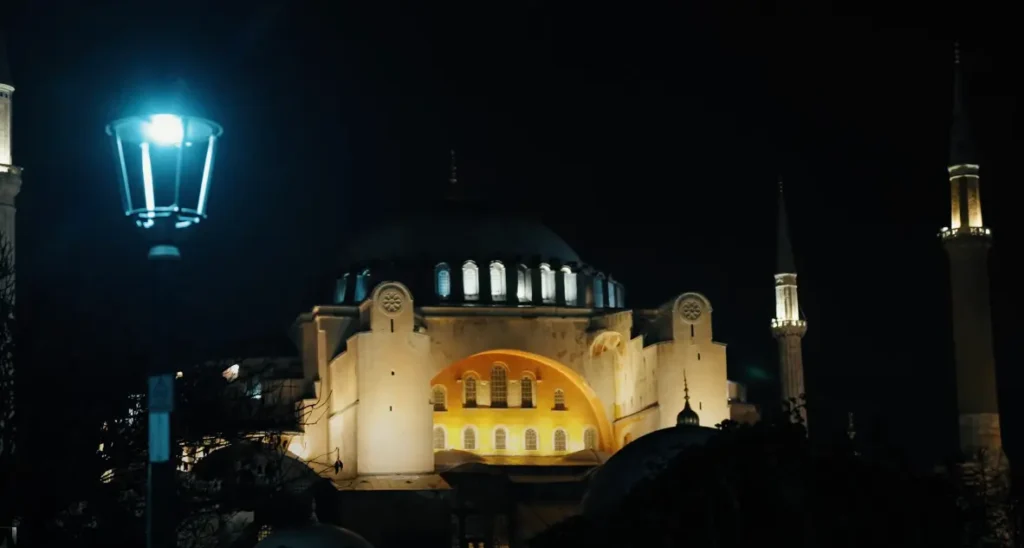
Ottoman Influence
In 1453, the Ottoman Empire conquered Constantinople, and Sultan Mehmed II converted the Hagia Sophia into a mosque. This marked the beginning of its Ottoman influence. The building underwent several changes to reflect its new role as a mosque.
Key changes during the Ottoman era included:
- Minarets Addition: Four minarets were added to the structure.
- Islamic Calligraphy: Large medallions with Arabic calligraphy were installed inside.
- Mihrab and Minbar: A mihrab (prayer niche) and minbar (pulpit) were added.
The Hagia Sophia mosque’s history took a new turn under Ottoman rule. The mosque became a central place for Islamic worship and a symbol of Ottoman architectural achievement. The fusion of Byzantine and Ottoman elements created a unique and harmonious blend, making the Hagia Sophia an enduring symbol of cultural and religious transformation.
Architectural Marvel
The Hagia Sophia Grand Mosque in Istanbul is an architectural marvel. This stunning building has a rich history and has served many purposes. People from all over the world come to see its beauty. Visit Hagia Sophia mosque to experience its grandeur. The structure and artwork are mesmerizing. Let’s explore its dome design and interior painting.
Dome Design
The Hagia Sophia’s dome design is breathtaking. The large dome sits at the centre and looks like it floats in the air. This design was unique for its time. The dome is 55.6 meters high and 31 meters wide and is supported by massive arches and pillars.
Key features of the dome design include:
- Central dome with a diameter of 31 meters
- Height of 55.6 meters from the ground
- 40 windows around the base of the dome
- Supported by arches and pendentives
The light that comes through the windows makes the dome look like it is floating. This creates a magical effect inside the mosque. The dome design is a masterpiece of ancient engineering.
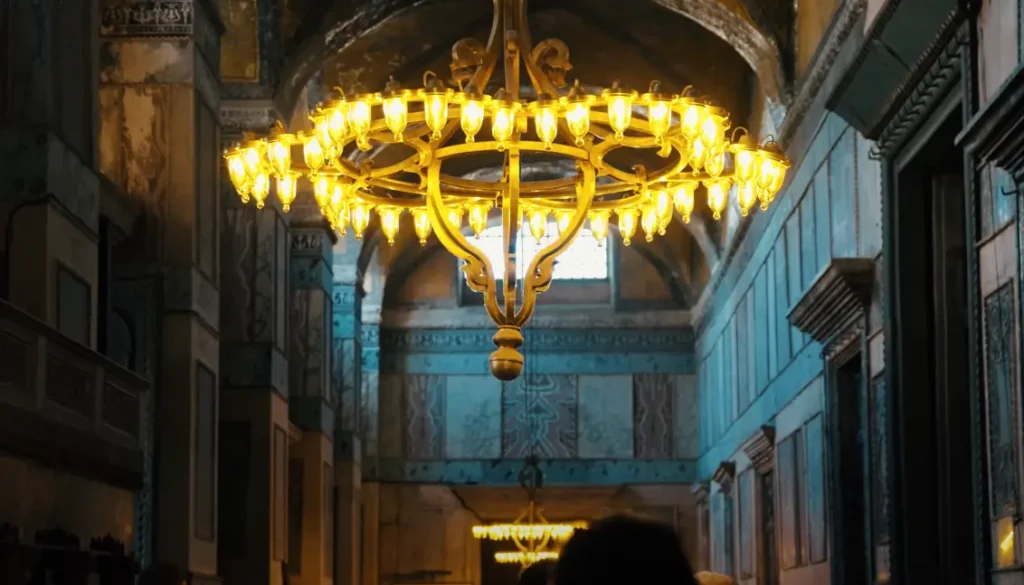
Interior Artwork
The interior artwork of the Hagia Sophia is equally impressive. The walls and ceilings are covered with beautiful mosaics depicting religious scenes and figures. The artwork includes intricate patterns and colourful tiles.
Some highlights of the interior artwork are:
- Mosaics of Jesus, Mary, and angels
- Calligraphy panels with Islamic verses
- Marble pillars and walls
- Golden mosaics on the dome
Visitors are amazed by the detailed artwork. The combination of Christian and Islamic art makes it unique. Hagia Sophia mosque tickets give you access to see this beautiful interior. The artwork tells stories of the past and shows the skill of ancient artists.
Cultural Impact
The Hagia Sophia Grand Mosque in Istanbul is an iconic structure with a rich history that spans centuries. Initially built as a cathedral in the Byzantine Empire, it was later converted into a mosque by the Ottomans. Today, the Hagia Sophia Grand Mosque is a symbol of Istanbul’s cultural and religious heritage. Its unique blend of Christian and Islamic architecture makes it a marvel to behold. The mosque’s cultural impact is profound, influencing both faith and tourism in the region.
Symbol Of Faith
The Hagia Sophia Grand Mosque in Istanbul is a powerful symbol of faith for both Christians and Muslims. Originally constructed as a cathedral in 537 AD, it was one of the largest churches in the world. It remained a Christian basilica for nearly 1,000 years before being converted into a mosque in 1453 by the Ottoman Empire. This transformation represented the Ottoman’s conquest and their devotion to Islam.
Key Hagia Sophia mosque facts include:
- The Hagia Sophia mosque architecture features a large central dome, a hallmark of Byzantine design.
- Islamic calligraphy and Christian mosaics coexist within its walls.
- It served as a mosque for almost 500 years before becoming a museum in 1935.
- In 2020, it was reconverted into a mosque, reinstating its religious significance.
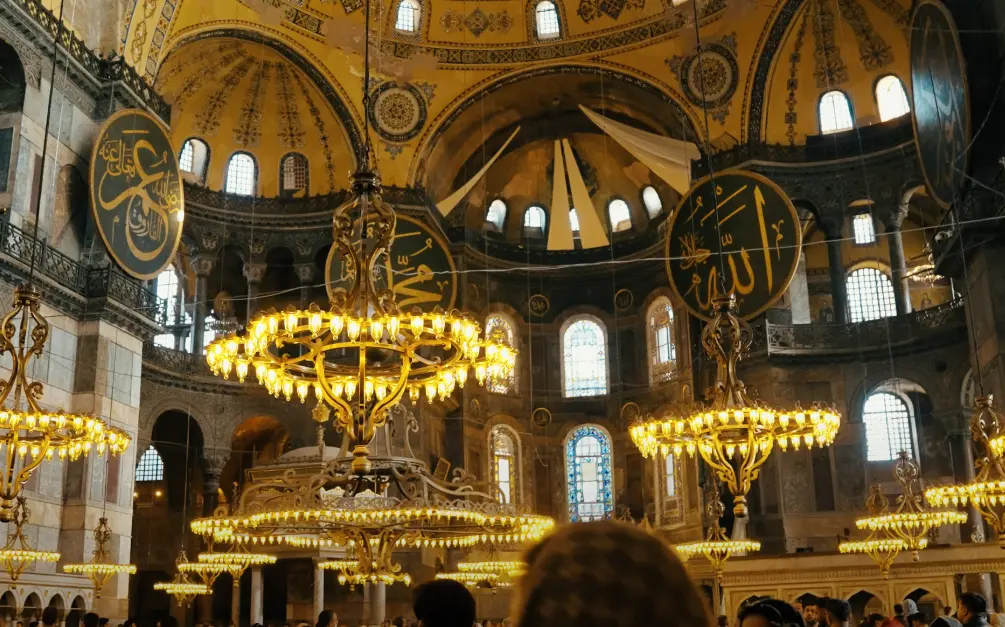
Today, the Hagia Sophia Grand Mosque remains a place of worship and a testament to the enduring power of faith. Its ability to serve both religious communities highlights its unique role in Istanbul’s cultural landscape.
Tourist Attraction
The Hagia Sophia Grand Mosque is one of Istanbul’s most visited tourist attractions. Its stunning architecture and historical significance draw millions of visitors each year. The combination of Byzantine and Ottoman design elements offers a visual feast for tourists. The grand dome, minarets, and intricate mosaics are some of the key highlights.
Visitors can experience:
- The awe-inspiring central dome seems to float above the interior space.
- The beautiful mosaics depict Christian saints and scenes from the Bible.
- The elegant calligraphy panels display Quranic verses.
The Hagia Sophia mosque architecture not only tells the story of its religious transformations but also showcases the artistic achievements of different eras. Tourists often leave with a deeper appreciation of Istanbul’s rich history and cultural diversity. It’s a must-visit for anyone interested in architecture, history, or religion.
Controversial Transformations
The Hagia Sophia Grand Mosque in Istanbul stands as a symbol of rich history and cultural change. This majestic structure has witnessed numerous transformations over the centuries. It has served as a cathedral, mosque, and museum at different times. Each transformation tells a story of religious and political shifts. The controversial transformations of Hagia Sophia continue to stir discussions today.
From Cathedral To Mosque
The Hagia Sophia mosque’s significance is rooted in its complex history. Originally built as a cathedral in 537 AD by Emperor Justinian I, it was the largest Christian church of its time. The cathedral was known for its massive dome and stunning Byzantine architecture.
In 1453, Ottoman Sultan Mehmed II conquered Constantinople. He ordered the conversion of the cathedral into a mosque. This marked the beginning of the Hagia Sophia religious transformation. Several changes were made to the building:
- The addition of minarets.
- Covering of Christian mosaics with Islamic calligraphy.
- Construction of a mihrab facing Mecca.
These alterations reflected the city’s new Islamic identity. The Hagia Sophia Grand Mosque in Istanbul became a prominent symbol of Ottoman power and Islamic culture.
Modern-day Uses
Today, the Hagia Sophia Grand Mosque in Istanbul serves as a place of worship and a tourist attraction. In 1935, the Turkish Republic converted it into a museum. This decision aimed to create a secular space that honoured both its Christian and Islamic heritage.
In 2020, it was reconverted into a mosque, which was met with mixed reactions worldwide. Despite the controversies, Hagia Sophia remains open to visitors of all faiths. It continues to attract millions of tourists annually who admire its architectural splendour and historical significance.
The mosque holds daily prayers and special religious events. Yet, non-Muslim visitors can still explore its historic sections. Hagia Sophia’s dual role reflects the cultural diversity and tolerance of modern Istanbul.

Visiting Tips
The Hagia Sophia Grand Mosque in Istanbul is a must-visit. It has a rich history and stunning architecture. Knowing the best times to visit and local customs can enhance your experience. Here are some useful tips to make your visit memorable.
Best Times To Visit
Choosing the right time to visit the Hagia Sophia Grand Mosque can make a big difference. The mosque is open all year round, but some periods are better than others.
Early mornings are the best time to visit. The mosque is less crowded, and you can enjoy the peaceful atmosphere. The number of visitors is usually lower on weekdays than on weekends, which means you can explore more comfortably.
Consider visiting during the off-peak season. In months like November and February, there are fewer tourists. The weather is cooler, making it more pleasant to walk around. Here’s a table to help you plan:
Month
Visitor Traffic
Weather
January Low Cold
April High Mild
August High Hot
November Low Mild
Booking a guided tour can also save time. Guided tours of Hagia Sophia mosque provide detailed information and skip-the-line access, helping you avoid long queues and get the most out of your visit.
Local Customs
Respecting local customs is important when visiting the Hagia Sophia Grand Mosque in Istanbul. This ensures a pleasant experience for everyone. Here are some tips to keep in mind:
- Dress modestly. Women should cover their heads with a scarf.
- Remove your shoes before entering the mosque.
- Keep noise levels down to maintain a peaceful environment.
- Do not take photos during prayer times.
Understanding the Hagia Sophia mosque’s interior design can also enhance your visit. The interior features stunning mosaics and grand domes. Taking a moment to appreciate these details can make your visit more meaningful.
Locals are friendly and welcoming. Showing respect and following these customs will ensure you have a great experience.
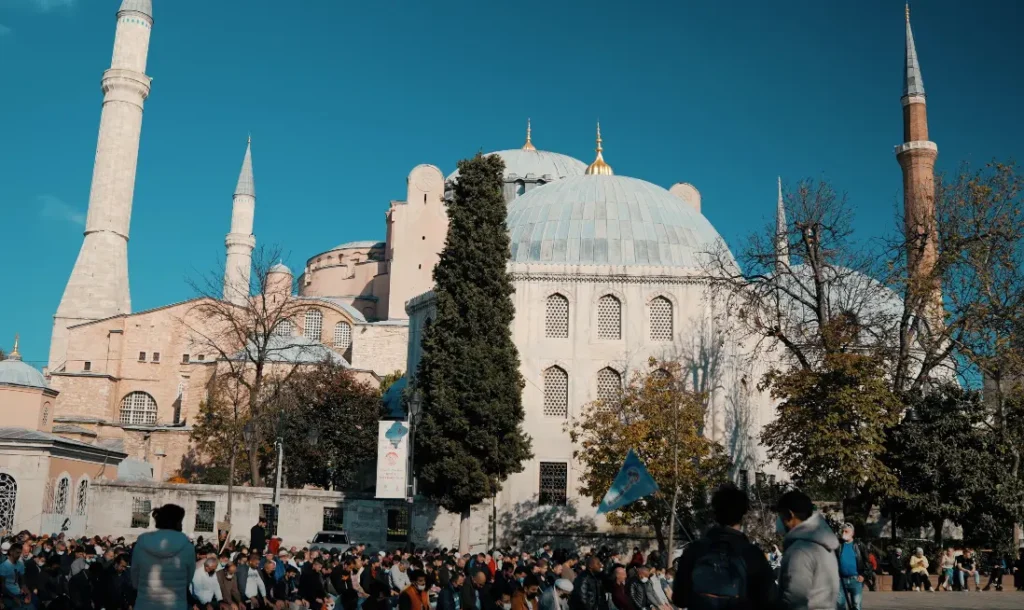
Hagia Sophia Tickets
The Hagia Sophia Grand Mosque in Istanbul is a marvel. This iconic landmark has a rich history. It combines stunning architecture with cultural significance. Many people visit to experience its beauty. Let’s explore how to get Hagia Sophia tickets and enjoy your visit.
Where To Buy Tickets
Tickets are available online and at the entrance. Buying online saves time and avoids long lines. Many websites offer tickets. Choose a trusted source to avoid scams.
Types Of Tickets
Type of Ticket
Price
General Admission $15
Student Ticket $10
Guided Tour $25
Guided Tours
Guided tours of Hagia Sophia mosque provide a richer experience. A guide shares interesting stories and facts. Tours are available in many languages and last about one hour.
Best Time To Visit
Visit early in the morning or late afternoon. These times are less crowded. If possible, avoid weekends. The mosque is busy during holidays.
Important Things To Know
- Dress modestly: shoulders and knees covered.
- Photography is allowed, but no flash.
- Be respectful of prayers and ceremonies.
Special Events And Exhibitions
Hagia Sophia hosts special events and exhibitions that showcase its history and art. Check the official website for details. Plan your visit around these events for a unique experience.
Hagia Sophia Mosque Interior Design
The Hagia Sophia mosque’s interior design is breathtaking. Marvel at the large dome and intricate mosaics. The blend of Christian and Islamic art is unique. Every corner tells a story.
Frequently Asked Questions
What Is Hagia Sophia Grand Mosque?
Hagia Sophia is a historic mosque in Istanbul. It was originally a cathedral and then a museum.
Where Is Hagia Sophia Located?
Hagia Sophia is situated in Sultanahmet, the historic heart of Istanbul, Turkey.
Why Is Hagia Sophia Famous?
Hagia Sophia is renowned for its stunning architecture and its rich history as a cathedral, mosque, and museum.
Can You Visit Hagia Sophia?
Yes, Hagia Sophia is open to visitors. Tourists can explore its historical and architectural wonders.
When Was Hagia Sophia Built?
Hagia Sophia was constructed in 537 AD during the reign of Byzantine Emperor Justinian I.
Conclusion
The Hagia Sophia Grand Mosque in Istanbul is captivated by its rich history and stunning architecture. This iconic landmark offers a unique blend of Byzantine and Ottoman influences. Visiting the Hagia Sophia provides a profound cultural experience. Discover the beauty and significance of this majestic site on your next trip to Istanbul.


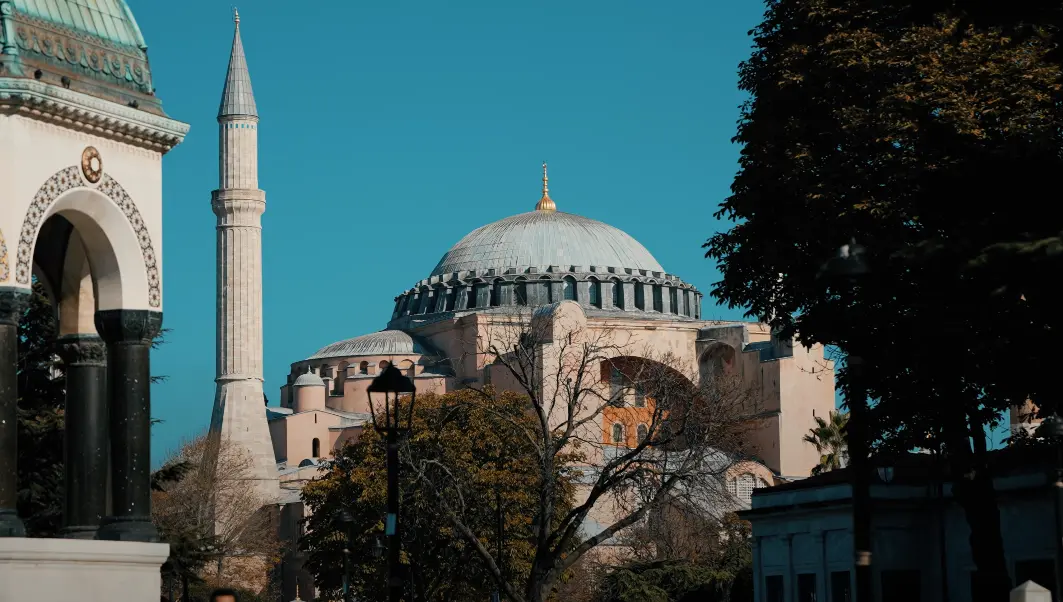
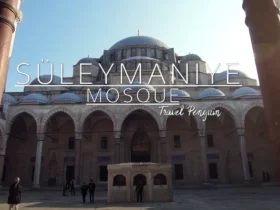
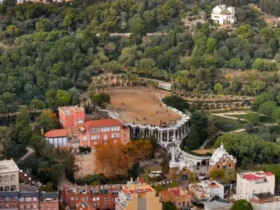
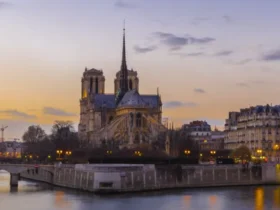


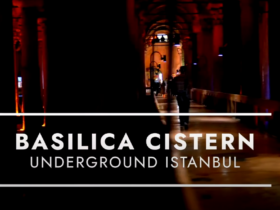
Leave a Review